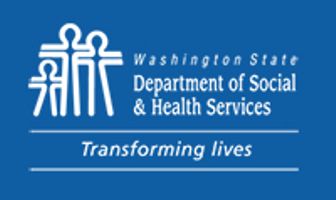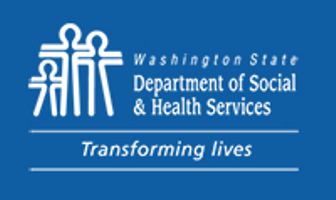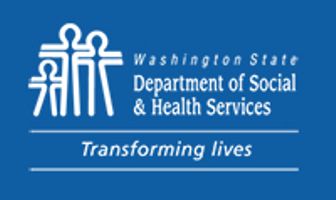Title Page
-
Conducted on
-
Prepared by
-
Location
-
Detailed Location
- GPU Common areas
- ***AT Bldg/TX Mall***
- GPU Food Service West Lake / Pod H
- 3N1 APU
- GPU Pod HMH
- HR / IT / Safety Offices / Rehab Offices /
- 1S1 FSU
- GPU Pod B
- Food Service East Lake-both levels
- 1N1 APU
- Security / PERT /Social Work / FSU Psychology Area / Med Staff Office
- GPU Pod D
- 2N1 APU
- FSU/APU/AT Bldg Yard Spaces/Sidewalks
- 2S1 FSU
- Educational Services
- GPU Pod E
- Dental Office 0N3 / Psychology Area
- 2N3 FSU
- GPU Lab
- Medical Records / SB / Accounting-includes patient funds /Admin / CNO /
- Pharmacy
- GPU OT and Rehab Areas
- ETRU
- 3S1 FSU
- 0N3 Offices / Central Supply / Housekeeping / Basement Corridor / QM
- ***1N3***New ward scheduled to open 1 Jul 20
- ***3N3***New ward scheduled to open 1 Jul 20
Utilities EOC Checklist
-
UM 1. Electrical device covers & enclosures are: Securely in place. No exposed wiring. Free of physical damage
-
What is the likelihood to harm a patient / staff / Visitor?
- High: Could directly lead to harm without need for other significant circumstances or failures.--Likely
- Moderate: Could cause harm directly, but more likely to cause harm as a contributing factor in the presence of special circumstances or additional failures.--Possible
- Low: Undermines safety/quality or contributes to an unsafe environment, but very unlikely to directly contribute to harm.--Rare
-
Is the problem…
- Widespread: issue is “pervasive at the organization” --Process failure/systemic failure --Majority of patients are/could be impacted
- Pattern: issue has potential to “impact more than a limited number of patients impacted” -- Process variation -- > or = 3 but less than 50% patients impacted
- Limited: issue is a “unique occurrence” -- Outlier -- Not representative of routine/regular practice
-
UM 2. Electrical devices:▪ Adequate number of receptacles provided▪ E-power receptacles marked/labelled▪ Cover plates undamaged and securely in place
-
What is the likelihood to harm a patient / staff / Visitor?
- High: Could directly lead to harm without need for other significant circumstances or failures.--Likely
- Moderate: Could cause harm directly, but more likely to cause harm as a contributing factor in the presence of special circumstances or additional failures.--Possible
- Low: Undermines safety/quality or contributes to an unsafe environment, but very unlikely to directly contribute to harm.--Rare
-
Is the problem…
- Widespread: issue is “pervasive at the organization” --Process failure/systemic failure --Majority of patients are/could be impacted
- Pattern: issue has potential to “impact more than a limited number of patients impacted” -- Process variation -- > or = 3 but less than 50% patients impacted
- Limited: issue is a “unique occurrence” -- Outlier -- Not representative of routine/regular practice
-
UM 3. E-power receptacles used for critical equipment only?
-
What is the likelihood to harm a patient / staff / Visitor?
- High: Could directly lead to harm without need for other significant circumstances or failures.--Likely
- Moderate: Could cause harm directly, but more likely to cause harm as a contributing factor in the presence of special circumstances or additional failures.--Possible
- Low: Undermines safety/quality or contributes to an unsafe environment, but very unlikely to directly contribute to harm.--Rare
-
Is the problem…
- Widespread: issue is “pervasive at the organization” --Process failure/systemic failure --Majority of patients are/could be impacted
- Pattern: issue has potential to “impact more than a limited number of patients impacted” -- Process variation -- > or = 3 but less than 50% patients impacted
- Limited: issue is a “unique occurrence” -- Outlier -- Not representative of routine/regular practice
-
UM 4. Ground fault receptacles provided in wet locations?
-
What is the likelihood to harm a patient / staff / Visitor?
- High: Could directly lead to harm without need for other significant circumstances or failures.--Likely
- Moderate: Could cause harm directly, but more likely to cause harm as a contributing factor in the presence of special circumstances or additional failures.--Possible
- Low: Undermines safety/quality or contributes to an unsafe environment, but very unlikely to directly contribute to harm.--Rare
-
Is the problem…
- Widespread: issue is “pervasive at the organization” --Process failure/systemic failure --Majority of patients are/could be impacted
- Pattern: issue has potential to “impact more than a limited number of patients impacted” -- Process variation -- > or = 3 but less than 50% patients impacted
- Limited: issue is a “unique occurrence” -- Outlier -- Not representative of routine/regular practice
-
UM 5. Electrical power strips meet the following requirements:▪ Wires are managed to prevent tripping hazards▪ Not daisy-chained
-
What is the likelihood to harm a patient / staff / Visitor?
- High: Could directly lead to harm without need for other significant circumstances or failures.--Likely
- Moderate: Could cause harm directly, but more likely to cause harm as a contributing factor in the presence of special circumstances or additional failures.--Possible
- Low: Undermines safety/quality or contributes to an unsafe environment, but very unlikely to directly contribute to harm.--Rare
-
Is the problem…
- Widespread: issue is “pervasive at the organization” --Process failure/systemic failure --Majority of patients are/could be impacted
- Pattern: issue has potential to “impact more than a limited number of patients impacted” -- Process variation -- > or = 3 but less than 50% patients impacted
- Limited: issue is a “unique occurrence” -- Outlier -- Not representative of routine/regular practice
-
UM 6. Battery powered task lighting functions properly?▪ Emergency generator locations ▪ Transfer switch locations
-
What is the likelihood to harm a patient / staff / Visitor?
- High: Could directly lead to harm without need for other significant circumstances or failures.--Likely
- Moderate: Could cause harm directly, but more likely to cause harm as a contributing factor in the presence of special circumstances or additional failures.--Possible
- Low: Undermines safety/quality or contributes to an unsafe environment, but very unlikely to directly contribute to harm.--Rare
-
Is the problem…
- Widespread: issue is “pervasive at the organization” --Process failure/systemic failure --Majority of patients are/could be impacted
- Pattern: issue has potential to “impact more than a limited number of patients impacted” -- Process variation -- > or = 3 but less than 50% patients impacted
- Limited: issue is a “unique occurrence” -- Outlier -- Not representative of routine/regular practice
-
UM 7. Domestic hot water temperature is maintained according to policy:▪ 105-120 F in hospital spaces
-
What is the likelihood to harm a patient / staff / Visitor?
- High: Could directly lead to harm without need for other significant circumstances or failures.--Likely
- Moderate: Could cause harm directly, but more likely to cause harm as a contributing factor in the presence of special circumstances or additional failures.--Possible
- Low: Undermines safety/quality or contributes to an unsafe environment, but very unlikely to directly contribute to harm.--Rare
-
Is the problem…
- Widespread: issue is “pervasive at the organization” --Process failure/systemic failure --Majority of patients are/could be impacted
- Pattern: issue has potential to “impact more than a limited number of patients impacted” -- Process variation -- > or = 3 but less than 50% patients impacted
- Limited: issue is a “unique occurrence” -- Outlier -- Not representative of routine/regular practice
-
UM 8. Appropriate pressure relationships are maintained where required?▪ Soiled utility rooms ▪ Clean utility rooms▪ Sterile processing & storage rooms
-
What is the likelihood to harm a patient / staff / Visitor?
- High: Could directly lead to harm without need for other significant circumstances or failures.--Likely
- Moderate: Could cause harm directly, but more likely to cause harm as a contributing factor in the presence of special circumstances or additional failures.--Possible
- Low: Undermines safety/quality or contributes to an unsafe environment, but very unlikely to directly contribute to harm.--Rare
-
Is the problem…
- Widespread: issue is “pervasive at the organization” --Process failure/systemic failure --Majority of patients are/could be impacted
- Pattern: issue has potential to “impact more than a limited number of patients impacted” -- Process variation -- > or = 3 but less than 50% patients impacted
- Limited: issue is a “unique occurrence” -- Outlier -- Not representative of routine/regular practice
-
UM 9. Mechanical and electrical spaces are not used for the storage of combustible materials?
-
What is the likelihood to harm a patient / staff / Visitor?
- High: Could directly lead to harm without need for other significant circumstances or failures.--Likely
- Moderate: Could cause harm directly, but more likely to cause harm as a contributing factor in the presence of special circumstances or additional failures.--Possible
- Low: Undermines safety/quality or contributes to an unsafe environment, but very unlikely to directly contribute to harm.--Rare
-
Is the problem…
- Widespread: issue is “pervasive at the organization” --Process failure/systemic failure --Majority of patients are/could be impacted
- Pattern: issue has potential to “impact more than a limited number of patients impacted” -- Process variation -- > or = 3 but less than 50% patients impacted
- Limited: issue is a “unique occurrence” -- Outlier -- Not representative of routine/regular practice
-
UM 10. Spaces around pipes, conduits, bus ducts, cables, wires, air ducts, etc. that penetrate fire and smoke rated walls, floors and ceilings are protected with an approved fire-rated material/assembly?
-
What is the likelihood to harm a patient / staff / Visitor?
- High: Could directly lead to harm without need for other significant circumstances or failures.--Likely
- Moderate: Could cause harm directly, but more likely to cause harm as a contributing factor in the presence of special circumstances or additional failures.--Possible
- Low: Undermines safety/quality or contributes to an unsafe environment, but very unlikely to directly contribute to harm.--Rare
-
Is the problem…
- Widespread: issue is “pervasive at the organization” --Process failure/systemic failure --Majority of patients are/could be impacted
- Pattern: issue has potential to “impact more than a limited number of patients impacted” -- Process variation -- > or = 3 but less than 50% patients impacted
- Limited: issue is a “unique occurrence” -- Outlier -- Not representative of routine/regular practice
-
Um 11. Exit signs are:. Provided when the path to exit is not readily apparent. Visible when doors are in opened or closed position. Adequately illuminated
-
What is the likelihood to harm a patient / staff / Visitor?
- High: Could directly lead to harm without need for other significant circumstances or failures.--Likely
- Moderate: Could cause harm directly, but more likely to cause harm as a contributing factor in the presence of special circumstances or additional failures.--Possible
- Low: Undermines safety/quality or contributes to an unsafe environment, but very unlikely to directly contribute to harm.--Rare
-
Is the problem…
- Widespread: issue is “pervasive at the organization” --Process failure/systemic failure --Majority of patients are/could be impacted
- Pattern: issue has potential to “impact more than a limited number of patients impacted” -- Process variation -- > or = 3 but less than 50% patients impacted
- Limited: issue is a “unique occurrence” -- Outlier -- Not representative of routine/regular practice
-
UM 12. Fire sprinkler system components (e.g. valves, alarms, connections, hoses, main drains, pumps, etc.):▪ Unobstructed▪ Undamaged▪ Secured and/or supervised▪ Accurately labelled / tagged
-
What is the likelihood to harm a patient / staff / Visitor?
- High: Could directly lead to harm without need for other significant circumstances or failures.--Likely
- Moderate: Could cause harm directly, but more likely to cause harm as a contributing factor in the presence of special circumstances or additional failures.--Possible
- Low: Undermines safety/quality or contributes to an unsafe environment, but very unlikely to directly contribute to harm.--Rare
-
Is the problem…
- Widespread: issue is “pervasive at the organization” --Process failure/systemic failure --Majority of patients are/could be impacted
- Pattern: issue has potential to “impact more than a limited number of patients impacted” -- Process variation -- > or = 3 but less than 50% patients impacted
- Limited: issue is a “unique occurrence” -- Outlier -- Not representative of routine/regular practice
-
UM 13. Battery powered egress lighting functions properly?. Stair enclosures. Areas without E-power
-
What is the likelihood to harm a patient / staff / Visitor?
- High: Could directly lead to harm without need for other significant circumstances or failures.--Likely
- Moderate: Could cause harm directly, but more likely to cause harm as a contributing factor in the presence of special circumstances or additional failures.--Possible
- Low: Undermines safety/quality or contributes to an unsafe environment, but very unlikely to directly contribute to harm.--Rare
-
Is the problem…
- Widespread: issue is “pervasive at the organization” --Process failure/systemic failure --Majority of patients are/could be impacted
- Pattern: issue has potential to “impact more than a limited number of patients impacted” -- Process variation -- > or = 3 but less than 50% patients impacted
- Limited: issue is a “unique occurrence” -- Outlier -- Not representative of routine/regular practice
-
UM 14. Do you have any additional comments? If so, please add them here.
-
Add media











